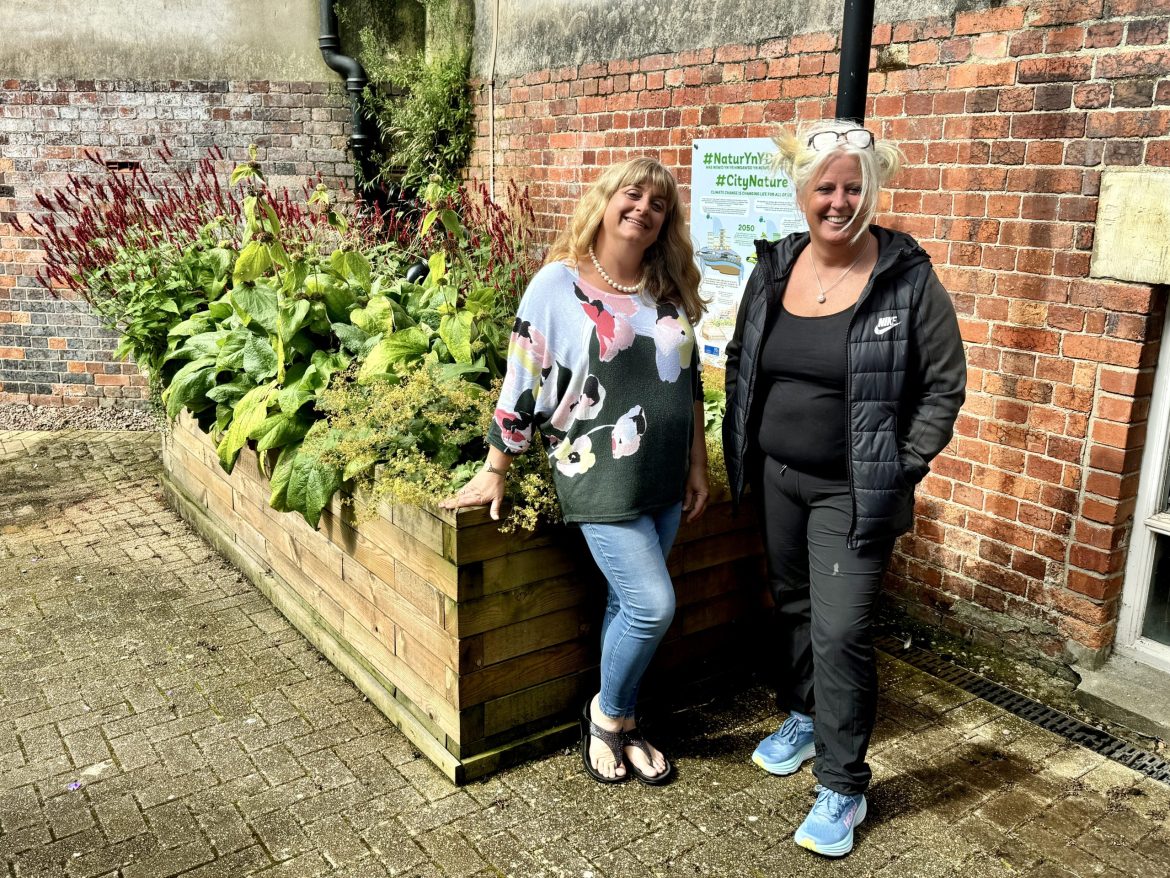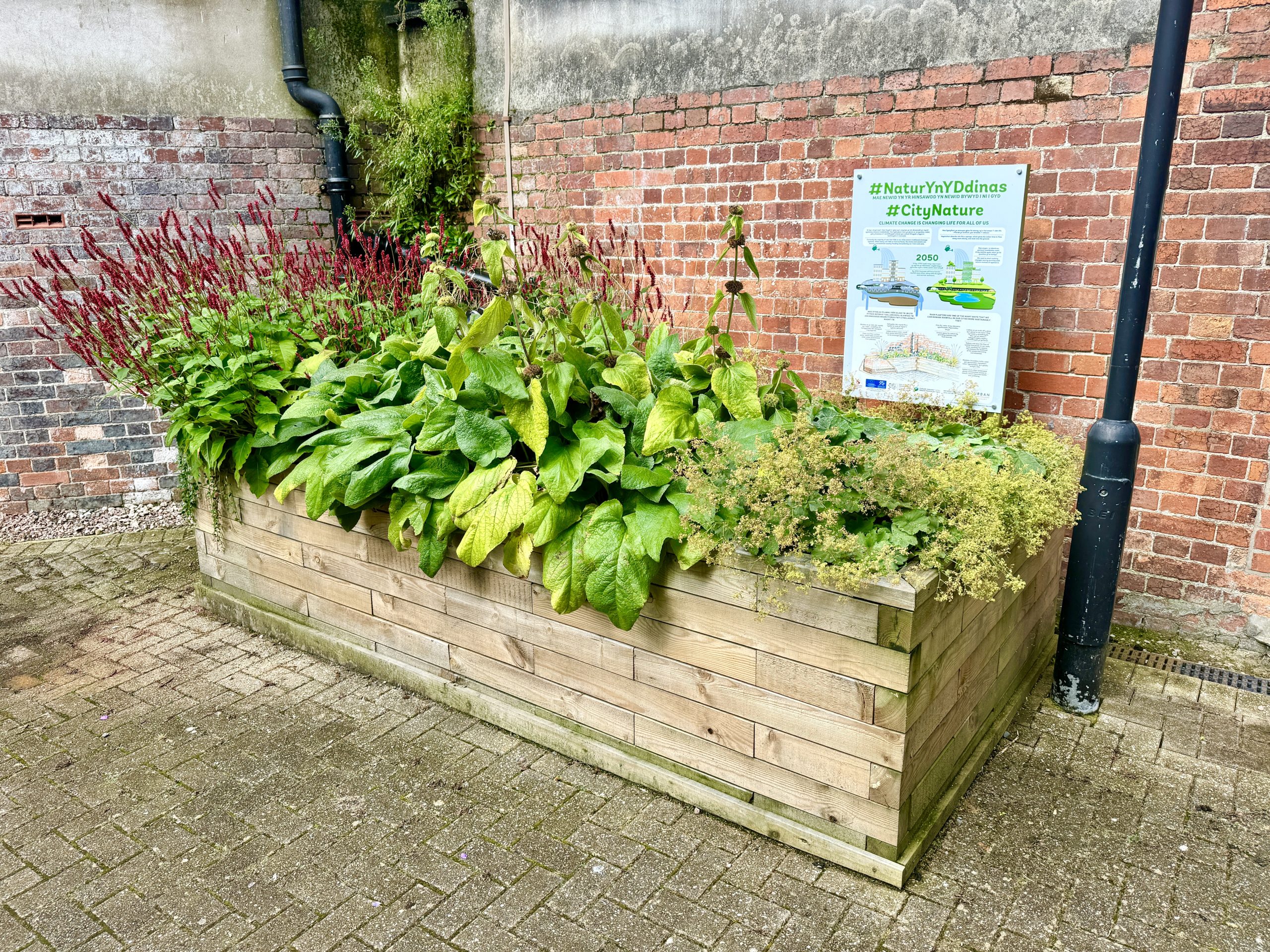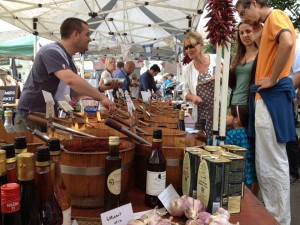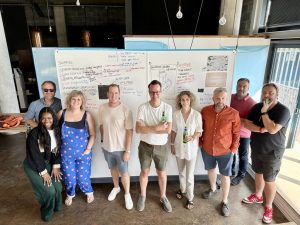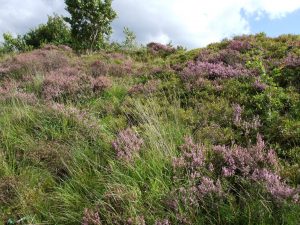Urban Foundry worked with Swansea Council, University of Wales Trinity Saint David, and Natural Resources Wales to build raingardens outside HQ Urban Kitchen.
The raingardens were made possible thanks to the Local Places for Nature funding by Welsh Government and Natural Resources Wales.
Managing stormwater with Sustainable Drainage Systems
The project aims to explore ways to manage stormwater in urban areas through Sustainable Drainage Systems (SuDS). The raingardens, designed as planters, play a big role in controlling the flow of rainwater. By slowing down the water’s journey to the drainage systems, these planters help prevent stormwater from overwhelming the urban infrastructure, which can lead to flooding.
One advantage of these planters is they are designed to capture rainwater directly from rooftops without needing to dig into the ground. This is beneficial in areas with underground utilities or other obstructions where digging down is not possible. By diverting rainwater into these planters, the flow of water into the drainage system is reduced, lowering the risk of urban flooding.
Contributing to urban environments
Beyond their practical benefits, raingardens contribute to urban environments. They transform often grey, concrete-dominated spaces into vibrant green oases, providing much-needed greenery. This greenery is not only attractive in urban areas but also helps to cool the surrounding environment as water evaporates and transpires from the plants. They also create habitats for local wildlife, particularly pollinators, support biodiversity in urban settings, and act as links to larger green spaces around the city centre including Tawe Riverside, North Hill and Swansea Bay wildlife corridors.
Penny Gruffydd, Landscape & Green Infrastructure Principal Officer, Swansea Council, said:
“We chose this space because it was accessible to the public, so everyone could see the raingardens. It’s a good location. The quantity of water and the piping system were also factors. In many city centre locations, the piping is contained within buildings, making it difficult to use downpipe disconnectors. The advantage is that in the courtyard, the piping is external, which means it can be altered, changed, and utilised for drainage. The planters won’t overflow because there’s an overflow valve. It has been really successful because of the expertise and commitment of the partners and the logistics of this site.”
Pilot project with future potential
This project is a pilot initiative and will be closely monitored, particularly the success of the planting and the overall effectiveness of the raingardens. There is potential for these solutions to be applied in other parts of Swansea City Centre, depending on how well they perform in this initial phase.
Hannah Davies, Project Manager, Urban Foundry said:
“Urban Foundry are experts in urban greening and regeneration, making us a natural partner for this project. The raingardens have been installed outside our HQ Urban Kitchen venue, allowing us to easily monitor and maintain them. Swansea Council and Natural Resources Wales have also recently installed a new raingarden on Burrows Road, designed to manage more heavily polluted water runoff from the roads. We supported the community engagement around its installation. These new raingardens are not only functional but also beautiful. We hope people will love them as much as we do.”
Working with green infrastructure experts
These rain gardens were designed by Robert Bray Associates, who bring extensive experience in this field, and installed by Natural Groundcare. The whole installation aligns with the Green Infrastructure (GI) Strategy that Swansea Council and Natural Resources Wales co-authored and published in 2001. The strategy focuses on capturing water flow, reducing runoff, and utilising water more effectively where it falls.
The Llys Glas site is listed, so the team worked closely with CADW and the planning department to ensure that the raingardens fit within the historical context. It’s a modern approach to managing surface water runoff in a heritage area, which added an interesting dimension to the project.
The impact on wellbeing
The project also enhances wellbeing. The increase in green spaces contributes to the amenity value of the area and provides residents with greater contact with nature, something that has become even more significant post-Covid.
To see the raingardens, visit HQ Urban Kitchen, The Old Police Station, Llys Glas, 37 Orchard Street, Swansea SA1 5AJ. Monday to Friday 9am – 4pm and Saturday 10am – 4pm.

